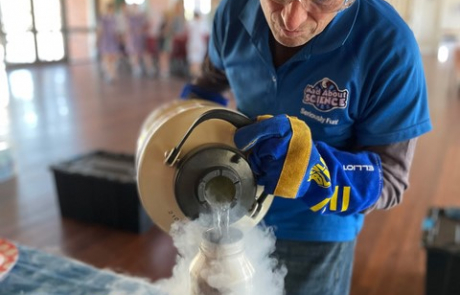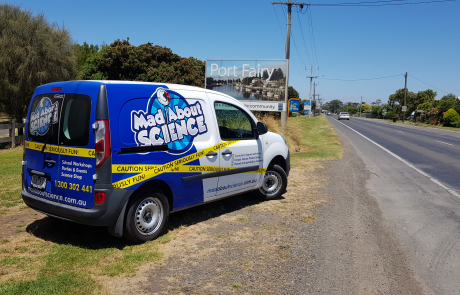Project Description
Extraordinary Elements Show
An explosive science show for secondary schools unveiling the wonders of the periodic table!
From the lightest element to the coolest element – watch our scientists fit amazing, bubbling, explosive and hair raising demonstrations in 1 fun-filled hour!!
Level: Year 7 to Year 12
Duration: 60 minutes
Numbers: Suitable for up to 240 students
Cost: $1695 plus GST per show
Travel surcharge also applies based on location
State: VIC
Demonstrations Included
Elephant’s toothpaste
Hair raising Van de Graaff volunteer moments
Setting fire to a hydrogen balloon
Lighting up flammable butane bubbles
Whoosh bottle
Liquid nitrogen explosions
Freezing and smashing super cooled objects
Learning Outcomes
Students will learn that some elements are extremely reactive and therefore dangerous.
Students will be able to identify solids, liquids, and gases.
Students will be able to recall the three components of the fire triangle; oxygen, fuel and energy.
Students will be able to identify an exothermic reaction as a reaction that releases energy.
Students will be able to distinguish between static and current electricity.
Students should understand that atoms have electrons.
Students should understand that atoms can bond with other atoms to create molecules.
Students will be able to explain what happens when you cool down a state of matter, and when you heat it up.
Victorian Curriculum Links – Year 7 to Year 8
The properties of the different states of matter can be explained in terms of the motion and arrangement of particles (VCSSU096)
Differences between elements, compounds and mixtures can be described by using a particle model (VCSSU097)
Chemical change involves substances reacting to form new substances (VCSSU098)
Energy appears in different forms including movement (kinetic energy), heat, light, chemical energy and potential energy; devices can change energy from one form to another (VCSSU104)
Victorian Curriculum Links – Year 9 to Year 10
All matter is made of atoms which are composed of protons, neutrons and electrons; natural radioactivity arises from the decay of nuclei in atoms (VCSSU122)
The atomic structure and properties of elements are used to organise them in the periodic table (VCSSU123)
Chemical reactions involve rearranging atoms to form new substances; during a chemical reaction mass is not created or destroyed (VCSSU124)
Different types of chemical reactions are used to produce a range of products and can occur at different rates; chemical reactions may be represented by balanced chemical equations (VCSSU125)
Chemical reactions, including combustion and the reactions of acids, are important in both non-living and living systems and involve energy transfer (VCSSU126)
Electric circuits can be designed for diverse purposes using different components; the operation of circuits can be explained by the concepts of voltage and current (VCSSU130)




